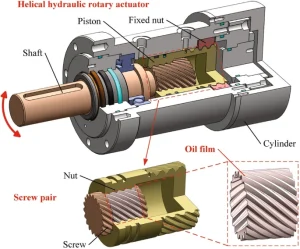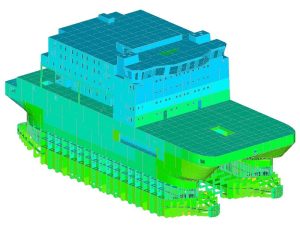Optimizing Lean Manufacturing Systems
In the modern manufacturing landscape, efficiency, speed, and precision are essential. Companies are under constant pressure to reduce production costs, minimize downtime, and maintain high-quality output. Production flow analysis (PFA) is a critical tool that allows manufacturers to understand, visualize, and optimize the movement of materials, components, and information throughout the production line. By identifying bottlenecks, inefficiencies, and areas for improvement, production flow analysis plays a central role in lean manufacturing systems, ensuring that every step of the process adds value and minimizes waste.
This article explores the role of production flow analysis in lean manufacturing, the use of simulation to reduce downtime, key tools for mapping production flows, the integration of IoT sensors, common bottlenecks, real-world case studies, and best practices for continuous improvement.
Why Production Flow Analysis Matters
Imagine a factory producing electronic devices where delays in one workstation cascade into a backlog across the entire line. Without visibility into the production flow, managers may struggle to pinpoint the source of delays, resulting in wasted time, higher costs, and reduced product quality.
Production flow analysis solves this problem by:
- Mapping the movement of materials and components
- Measuring cycle times and throughput
- Identifying bottlenecks and constraints
- Optimizing layouts and resource allocation
- Supporting data-driven decisions for continuous improvement
Key Insight: PFA is not just a managerial tool—it is a strategic enabler for lean manufacturing, cost reduction, and operational excellence.
Role of Production Flow Analysis in Lean Manufacturing Systems
Lean manufacturing emphasizes the elimination of waste and the continuous improvement of processes. Production flow analysis directly supports these principles by:
Identifying Waste
Waste in lean manufacturing includes:
- Overproduction: Producing more than demand requires
- Waiting: Idle time due to bottlenecks
- Transportation: Unnecessary movement of materials
- Inventory: Excess stock leading to storage costs
- Defects: Rework due to errors
PFA provides visibility into each process, allowing managers to detect inefficiencies and implement corrective measures.
Example: In an automotive assembly plant, production flow mapping revealed that a single robotic station was underperforming, causing a 15% increase in idle time downstream. Adjusting the workflow and adding a parallel workstation eliminated this bottleneck.
Improving Throughput
Throughput refers to the rate at which products move through the production line. By analyzing flow patterns, engineers can:
- Balance workloads across stations
- Optimize machine and worker allocation
- Reduce waiting times between processes
Example: A packaging company used PFA to redistribute tasks among workers, increasing throughput by 18% without adding additional resources.
Enhancing Flexibility
Modern manufacturing must adapt to varying demand and product customization. PFA enables:
- Dynamic workflow adjustments
- Rapid reallocation of resources
- Quick identification of capacity constraints
Tip: Integrating PFA with real-time data sources allows manufacturers to adapt production lines based on current workloads and demand forecasts.
Supporting Continuous Improvement
Production flow analysis provides a baseline for continuous improvement initiatives, such as:
- Lean Six Sigma projects
- Kaizen events
- 5S workplace organization
By tracking improvements over time, managers can measure the impact of process changes and sustain performance gains.
How Simulation Reduces Downtime

Simulation is a powerful component of production flow analysis. By creating a digital twin of the production line, manufacturers can test changes, predict outcomes, and optimize processes without disrupting real operations.
Key Benefits of Simulation
- Predicting Bottlenecks: Simulate new workflows to identify potential delays before implementation.
- Evaluating Layout Changes: Test new equipment placement or assembly sequences virtually.
- Resource Optimization: Analyze staffing and machine allocation for maximum efficiency.
- Cost Reduction: Reduce trial-and-error on the physical production line.
- Training: Simulate production scenarios for operator training and safety awareness.
Example: A pharmaceutical company used simulation to plan a new packaging line. By running multiple scenarios, they reduced expected downtime by 30% and avoided costly layout mistakes.
Tools for Production Flow Mapping
Various tools and software solutions assist in mapping and analyzing production flows:
Value Stream Mapping (VSM)
- Description: Visual representation of material and information flow
- Uses: Identify waste, cycle times, and bottlenecks
- Tip: Include both information flow and physical movement for a complete picture
Process Flow Charts
- Description: Diagram each step in the production process
- Uses: Simplify complex workflows, identify redundancies
- Tip: Combine with data on cycle times and throughput for actionable insights
Simulation Software
- Examples: FlexSim, AnyLogic, Plant Simulation (Siemens)
- Uses: Test workflow changes, evaluate new layouts, predict downtime
- Tip: Start with a simplified model and gradually add complexity
IoT-Enabled Dashboards
- Description: Real-time monitoring of machine and operator activity
- Uses: Detect slowdowns, track resource utilization, alert for anomalies
- Tip: Integrate with PFA software for live flow visualization
Spaghetti Diagrams
- Description: Trace movement of materials, workers, or machines
- Uses: Visualize unnecessary travel and material handling
- Tip: Use color coding to indicate waste intensity or frequency
Integrating IoT Sensors in Production Flow Analysis
IoT sensors play a growing role in modern production flow analysis by providing real-time data on:
- Machine utilization
- Conveyor speed and stoppages
- Environmental conditions affecting production
- Operator performance and safety
Example: A beverage bottling plant installed IoT sensors on filling lines, allowing production managers to detect slowdowns in real-time and adjust conveyor speeds, reducing downtime by 20%.
Benefits of IoT Integration
- Real-time monitoring for immediate corrective action
- Predictive maintenance based on machine health data
- Data collection for detailed flow analysis
- Enhanced collaboration between operations and engineering teams
Tip: Combine IoT data with simulation models to create predictive digital twins of production lines.
Common Bottlenecks in Manufacturing Lines
Even optimized production lines can encounter bottlenecks. Common causes include:
- Machine Downtime: Maintenance issues, equipment failure
- Worker Shortages: Insufficient staffing during peak demand
- Material Shortages: Delays in supply chain
- Poor Layout: Long travel distances between stations
- Complex Processes: Steps requiring specialized skills or machines
Tip: Use PFA combined with simulation to proactively identify bottlenecks and develop mitigation strategies.
Case Study: Reducing Production Time by 25%
Company: Electronics assembly plant producing circuit boards
Challenge: Frequent delays caused by manual testing stations and uneven workload distribution
Solution:
- Conducted a full production flow analysis using VSM and process flow charts
- Implemented simulation models in FlexSim to test layout changes
- Integrated IoT sensors on critical machines to monitor utilization
- Redistributed tasks to balance workload and reduce waiting times
Results:
- Production cycle time reduced by 25%
- Idle time on manual testing stations cut by 40%
- Overall throughput increased without adding staff or machinery
- Improved product quality due to reduced rework
Insight: Combining traditional flow mapping, simulation, and IoT integration provides measurable efficiency gains.
Best Practices for Continuous Improvement
To maintain optimized production flow, manufacturers should adopt these best practices:
- Regular Flow Analysis: Continuously review and update production maps
- Engage Operators: Collect feedback from frontline staff on inefficiencies
- Use Real-Time Monitoring: Detect issues as they arise
- Standardize Processes: Minimize variability in tasks
- Implement Lean Tools: Kaizen, 5S, and Six Sigma for continuous improvement
- Integrate IoT and AI: Use predictive analytics to anticipate delays and optimize schedules
- Track KPIs: Cycle time, throughput, machine utilization, and downtime
- Document Changes: Maintain a history of improvements and lessons learned
Conclusion
Production flow analysis is vital for lean manufacturing systems, enabling companies to reduce waste, optimize throughput, and maintain high-quality standards. By leveraging tools such as value stream mapping, process flow charts, simulation software, and IoT integration, manufacturers can proactively identify bottlenecks, improve efficiency, and support continuous improvement initiatives.
Case studies demonstrate the tangible impact of PFA, such as reducing production times by 25% and cutting downtime significantly. The combination of traditional analysis techniques, simulation, and smart sensor data provides a powerful toolkit for modern manufacturing managers and engineers.




